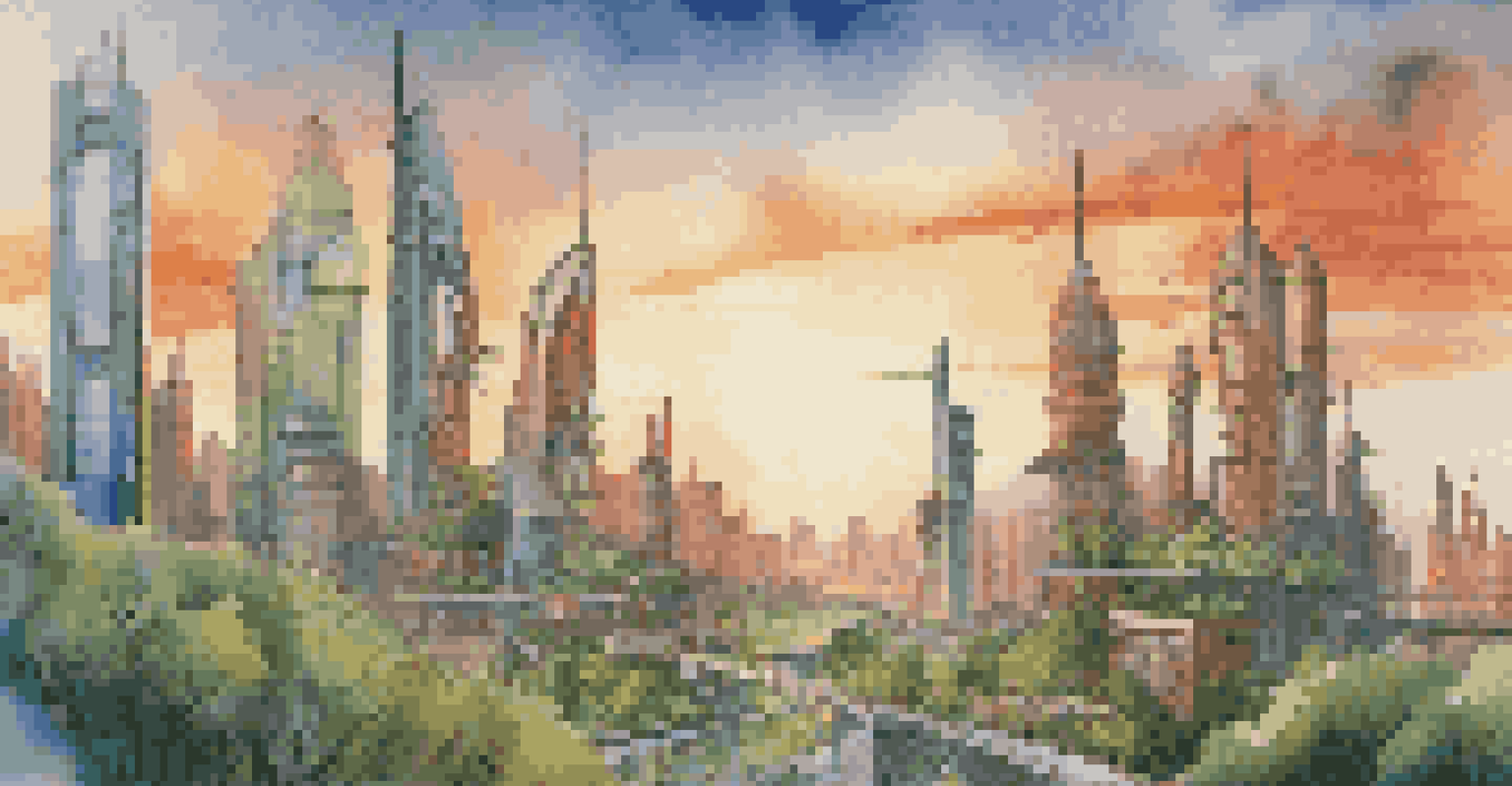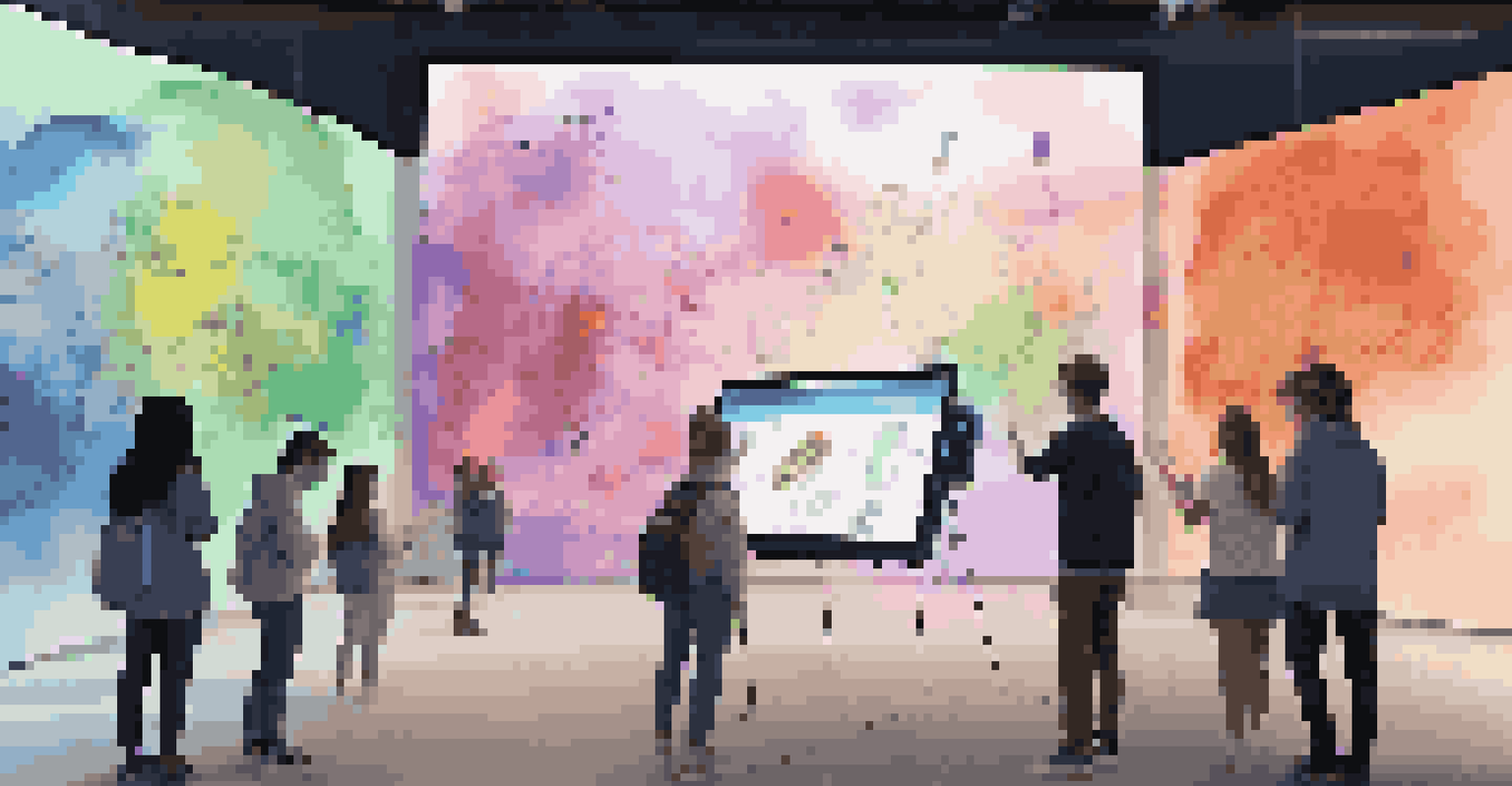Artistic Expression in STEM: Unlocking Student Potential

The Intersection of Art and STEM: A New Frontier
STEM—science, technology, engineering, and mathematics—has long been at the forefront of education. But what if we told you that adding art to this mix can unlock new levels of student potential? This fusion, often referred to as STEAM, emphasizes that creativity is just as essential as analytical skills in problem-solving.
Art is the most beautiful of all lies; it is the greatest truth we can tell.
By integrating artistic expression into STEM subjects, educators encourage students to think outside the box. For instance, a student designing a bridge can approach the project with an artistic mindset, considering aesthetics alongside functionality. This holistic approach not only enhances learning but also fosters innovation.
As we move towards a more complex world, blending art with STEM prepares students for real-world challenges. They learn to communicate ideas visually and conceptually, making their solutions more relatable and impactful. Thus, the STEAM approach is not just a trend; it’s a necessity in modern education.
Benefits of Artistic Expression in STEM Learning
Incorporating artistic elements into STEM learning can significantly boost student engagement. When students are allowed to express their creativity, they often become more invested in their work. This investment can lead to deeper understanding and retention of complex concepts, as they find personal meaning in their projects.

Moreover, artistic expression fosters critical thinking skills. For example, when students are tasked with creating a visually appealing project, they must evaluate various design elements. This process encourages them to analyze their choices and consider multiple viewpoints, ultimately enhancing their problem-solving abilities.
STEAM Boosts Student Engagement
Integrating art into STEM enhances student interest and investment in their projects, leading to deeper learning.
Additionally, students who engage with the arts report higher levels of confidence and self-efficacy. They learn to take risks in their creative endeavors, which translates to a willingness to experiment and innovate in STEM fields. This confidence can be pivotal in shaping future leaders who are unafraid to challenge the status quo.
Real-World Applications of STEAM Education
The power of combining art and STEM is evident in real-world applications. Fields like architecture, product design, and even software development rely on creative thinking. For instance, architects use artistic skills to create visually stunning buildings that are also structurally sound, demonstrating that aesthetics and functionality go hand in hand.
Creativity is thinking up new things. Innovation is doing new things.
In the tech industry, user interface (UI) designers blend art with technology to create intuitive applications. The success of these applications often hinges on how well they resonate with users, which requires a keen artistic eye. This integration shows that STEM fields can benefit greatly from artistic input.
Moreover, industries are increasingly valuing creative problem-solving skills. Companies are seeking employees who can approach challenges from unique angles, making a STEAM education a valuable asset in the job market. Thus, students with a foundation in both art and science are better equipped to thrive in today’s economy.
Cultivating Creativity in the Classroom
Creating a classroom environment that nurtures creativity is essential for effective STEAM education. Teachers can encourage students to explore their artistic side by incorporating hands-on projects that merge artistic and scientific principles. This could include activities like building models, creating infographics, or even designing experiments that require a creative approach.
Furthermore, collaborative projects can enhance creativity by allowing students to share ideas and learn from one another. Group work fosters an atmosphere where different perspectives are valued, leading to richer, more innovative outcomes. For instance, a group science project could involve creating a video presentation that combines storytelling with scientific data.
Creativity Fuels Problem-Solving
Artistic expression encourages critical thinking and innovative solutions, essential skills for future leaders.
Encouraging students to reflect on their creative processes is also crucial. When students assess their work and consider how their art influences their understanding of STEM concepts, they develop a deeper appreciation for both fields. This reflective practice not only enhances learning but also builds lifelong skills in self-evaluation and critical thinking.
Incorporating Technology into Artistic Expression
Technology plays a significant role in merging art with STEM. Digital tools such as graphic design software, 3D modeling programs, and coding platforms allow students to express their creativity in innovative ways. These technologies enable students to produce high-quality work that can be shared and critiqued, enhancing their learning experience.
For example, students can use coding to create interactive art installations, blending programming skills with artistic design. This not only makes learning more engaging but also equips students with valuable skills for a tech-driven job market. By embracing technology, educators can inspire students to see the endless possibilities that lie at the intersection of art and science.
Moreover, online platforms offer students the chance to connect with artists and scientists worldwide. Virtual workshops, webinars, and collaborative projects can expose students to diverse perspectives, further enriching their educational experience. This global approach allows students to see how artistic expression in STEM is valued across different cultures and industries.
Challenges in Integrating Art into STEM Education
Despite its benefits, integrating art into STEM education does come with challenges. One major concern is the traditional focus on standardized testing, which often prioritizes analytical skills over creativity. This emphasis can lead to a narrow curriculum that neglects the importance of artistic expression in fostering a well-rounded education.
Additionally, some educators may feel unprepared or lack the resources to effectively teach STEAM subjects. Professional development opportunities focused on art integration are essential to equip teachers with the necessary skills and confidence to embrace this approach. Schools must also invest in materials and programs that support creative learning.
Real-World Relevance of STEAM
Fields like architecture and tech illustrate how blending art with STEM leads to successful and impactful outcomes.
Finally, there may be resistance from parents or administrators who prioritize traditional STEM education. It’s crucial to communicate the value of STEAM education clearly, demonstrating how artistic expression can enhance students' understanding and performance in STEM subjects. By addressing these challenges head-on, schools can pave the way for a more inclusive and innovative educational framework.
The Future of STEAM Education
The future of education lies in the hands of those who embrace the STEAM approach. As industries evolve, the demand for creative thinkers who can navigate both artistic and scientific realms will continue to grow. By fostering this blend in schools, we prepare students not just for jobs, but for a world that values innovation and creativity.
Looking ahead, we can expect to see more interdisciplinary programs that encourage collaboration between art and STEM fields. Schools may begin to offer specialized courses that focus on the intersection of these areas, such as robotics with a design component, or environmental science paired with visual storytelling.

In conclusion, integrating artistic expression into STEM education is not just a trend; it’s a vital step towards cultivating the next generation of thinkers and innovators. By nurturing creativity within STEM, we unlock student potential and prepare them to tackle the challenges of tomorrow with confidence and originality.